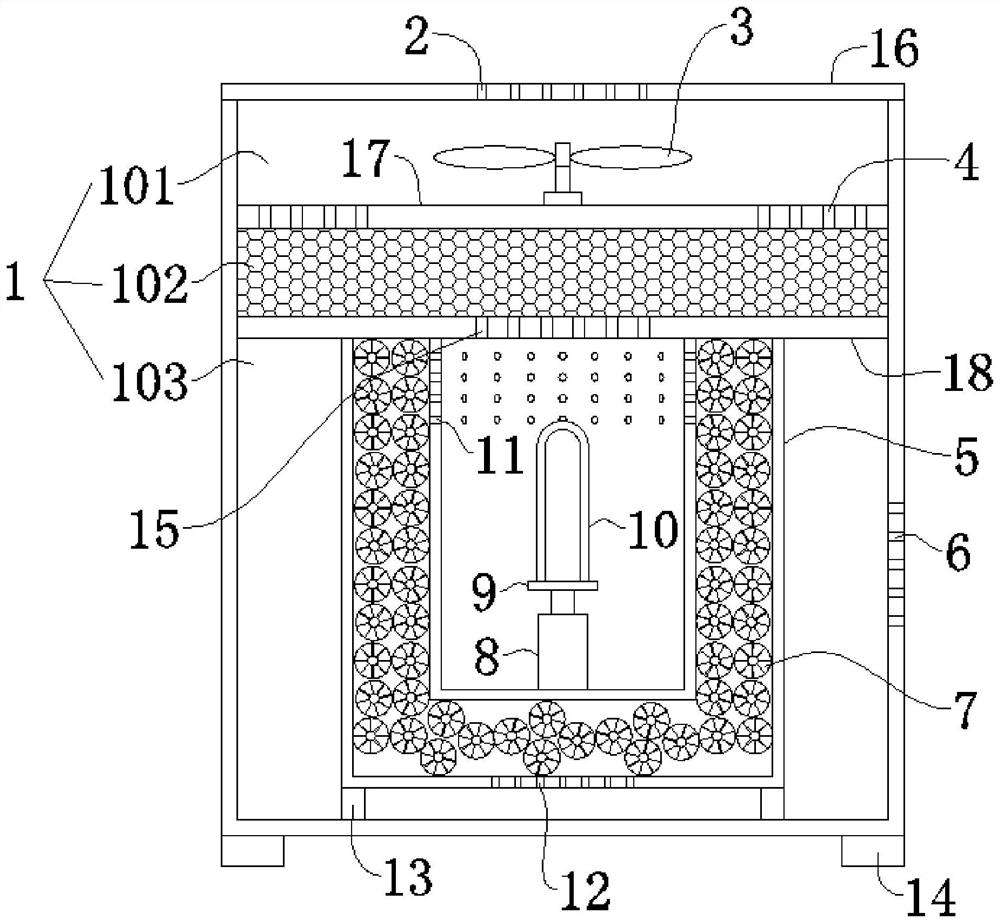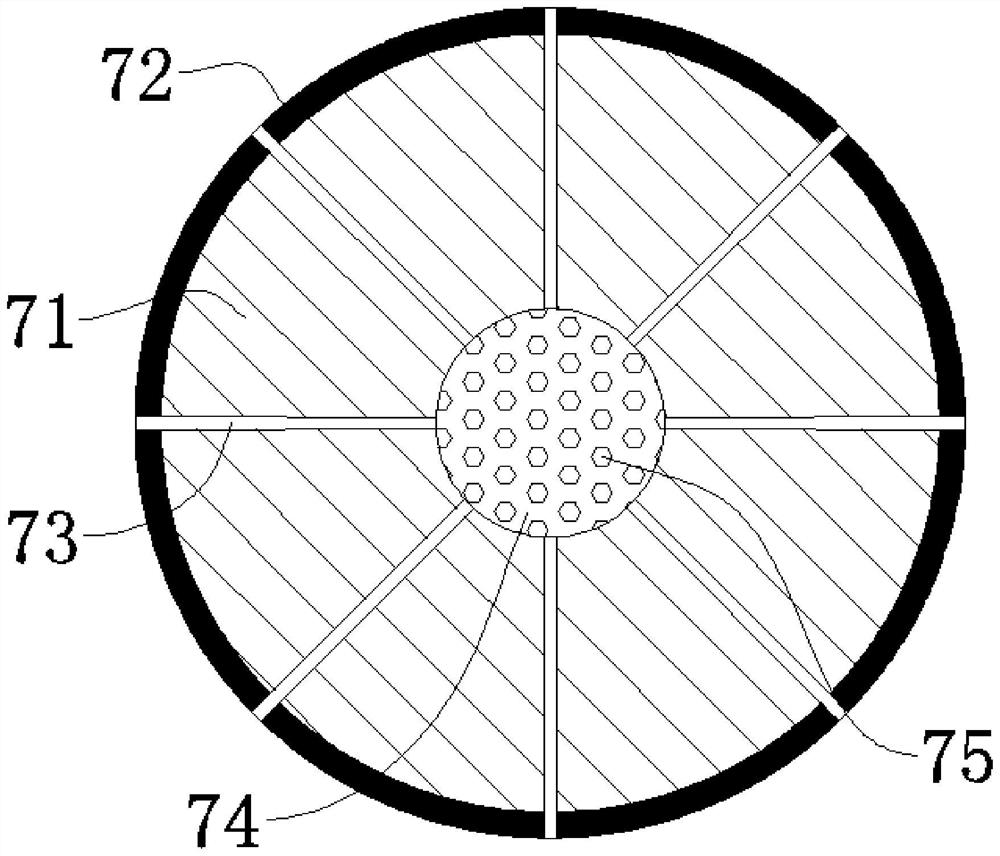Method for degrading formaldehyde in air by using nano titanium dioxide photocatalyst
A technology of nano-titanium dioxide and photocatalyst, which is applied in the field of air purification, can solve the problems of low degradation efficiency and ineffective formaldehyde removal effect, and achieve the effects of improving the effect, improving the quality of formaldehyde degradation, and increasing the flow resistance
- Summary
- Abstract
- Description
- Claims
- Application Information
AI Technical Summary
Problems solved by technology
Method used
Image
Examples
Embodiment 1
[0036] Embodiment 1: a kind of method of nano-titanium dioxide photocatalyst degradation formaldehyde in the air, as Figure 1-2 shown, including the following steps:
[0037] S1, Preparation of Formaldehyde Degradation Part 7
[0038] Prepare nano-titanium dioxide paint first, and then spray nano-titanium dioxide paint on the carrier pellet 71, so that the outer surface of the carrier pellet 71 forms a titanium dioxide coating 72 with a thickness of 0.5 mm, and formaldehyde degradation piece 7 is obtained.
[0039] Preferably, the preparation process of nano titanium dioxide coating is as follows:
[0040] S11. Mix the two according to the volume ratio of absolute ethanol and deionized 10:3 to obtain solution A; specifically, deionized is 30ml, and absolute ethanol is 100ml;
[0041] S12. Mix the two according to the volume ratio of the butyl titanate solution and the concentrated hydrochloric acid of 20:1, then add dehydrated alcohol three times the volume of the butyl tit...
Embodiment 2
[0058] Embodiment 2: a kind of method of nano-titanium dioxide photocatalyst degradation formaldehyde in the air, the difference with embodiment 1 is that the preparation process of nano-titanium dioxide coating is as follows:
[0059] S11. Mix the two according to the volume ratio of absolute ethanol and deionized 10:3 to obtain solution A; specifically, deionized is 30ml, and absolute ethanol is 100ml;
[0060] S12. Mix the two according to the volume ratio of the butyl titanate solution and the concentrated hydrochloric acid of 20:1, then add dehydrated alcohol three times the volume of the butyl titanate solution, and mix evenly to obtain the B solution; specifically, the concentrated hydrochloric acid is 5ml, butyl titanate solution is 100ml, absolute ethanol is 300ml;
[0061] S13. Slowly pour the A solution into the B solution under the strong stirring of a magnetic heating stirrer to obtain a gel-like material;
[0062] S14. Sealing and aging the above-mentioned gel-l...
Embodiment 3
[0065] Embodiment 3: a kind of method of nano-titanium dioxide photocatalyst degradation formaldehyde in the air, the difference with embodiment 1 is that the preparation process of nano-titanium dioxide coating is as follows:
[0066] S11. Mix the two according to the volume ratio of absolute ethanol and deionized 10:3 to obtain solution A; specifically, deionized is 30ml, and absolute ethanol is 100ml;
[0067] S12. Mix the two according to the volume ratio of the butyl titanate solution and the concentrated hydrochloric acid of 20:1, then add dehydrated alcohol three times the volume of the butyl titanate solution, and mix evenly to obtain the B solution; specifically, the concentrated hydrochloric acid is 5ml, butyl titanate solution is 100ml, absolute ethanol is 300ml;
[0068] S13. Slowly pour the A solution into the B solution under the strong stirring of a magnetic heating stirrer to obtain a gel-like material;
[0069] S14. Sealing and aging the above-mentioned gel-l...
PUM
| Property | Measurement | Unit |
|---|---|---|
| thickness | aaaaa | aaaaa |
Abstract
Description
Claims
Application Information
 Login to View More
Login to View More - R&D
- Intellectual Property
- Life Sciences
- Materials
- Tech Scout
- Unparalleled Data Quality
- Higher Quality Content
- 60% Fewer Hallucinations
Browse by: Latest US Patents, China's latest patents, Technical Efficacy Thesaurus, Application Domain, Technology Topic, Popular Technical Reports.
© 2025 PatSnap. All rights reserved.Legal|Privacy policy|Modern Slavery Act Transparency Statement|Sitemap|About US| Contact US: help@patsnap.com


